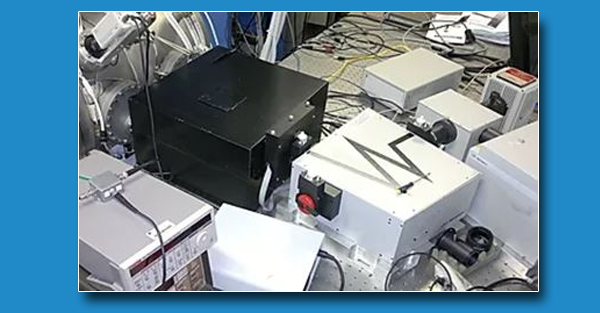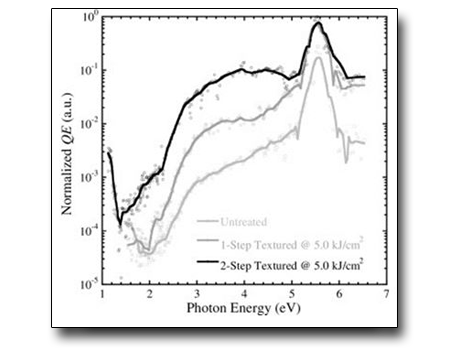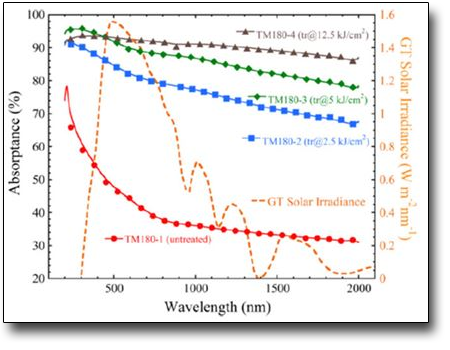
- Find the joint density of states in the band-gap of semiconductor materials;
- Find the absorbance of the textured semiconductors on the surface;
- Get the quantum efficiency as a function of the wavelength of the photodetector radiation;
TECHNICAL SPECIFICATION
-
300W Hg(Xe) and 150W deuterium (150W) lamps;
-
180-1100 nm working-range monocromathor;
-
Capability of double-photon measurements with a low-power laser in IR emission.
AVAILABLE TECHNIQUES
- spectral photoconductivity with applied bias (±500V)
SAMPLES
-
maximum size: 1x1 cm2
USE FOR
- semiconductors;
- photodetectors
CASE STUDIES
Optimization of black diamond films for solar energy conversion
Black diamond, namely a surface textured diamond film able to absorb efficiently the sunlight, is developed by the use of ultrashort pulse laser treatments. With the aim of fabricating a 2D periodic surface structure, a double-step texturing process is implemented and compared to the single-step one, able to induce the formation of 1D periodic structures. Although the obtained sub-microstructure does not show a regular 2D periodicity, a solar absorptance of about 98% is achieved as well as a quantum efficiency enhanced of one order of magnitude with respect to the 1D periodic surface texturing.
See: A. Bellucci et al., Appl. Surf. Sci. 380 (2016) 8-11


Absorptance enhancement in fs‐laser‐treated CVD diamond
Il texturing superficiale mediante impulsi con laser al fs è stato eseguito per migliorare l'assorbimento ottico del diamante CVD. Le strutture superficiali indotte sono state studiate in funzione della dose di trattamento D. È stata osservata una struttura periodica di ripples da 170 nm per D = 5,0 kJ cm − 2, mentre sia per dosi inferiori che superiori sono state ottenute strutture non ben definite o danneggiate. Le indagini Raman evidenziano cambiamenti trascurabili nel bulk del cristallo per tutti i campioni esaminati, suggerendo così che le proprietà fisiche del cristallo non sono state modificate dal trattamento. L'assorbimento ottico è fortemente migliorato dalla texturizzazione con il laser ed è crescente in funzione della dose di trattamento. L'assorbimento dello spettro solare satura fino a valori superiori al 90%. L'eccezionale miglioramento ottenuto nell'assorbimento dei fotoni rappresenta un passo preliminare e promettente per l’utilizzo del diamante sintetico nei futuri dispositivi di conversione ad alta efficienza per la concentrazione solare basata sulla photon-enhanced thermionic emission.
Si veda: P. Calvani et al., Phys. Status Solidi A 212 (2015) 2463–2467

 English (UK)
English (UK)  Italiano (Italia)
Italiano (Italia)